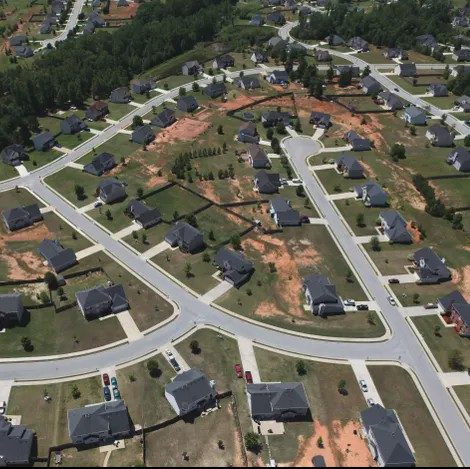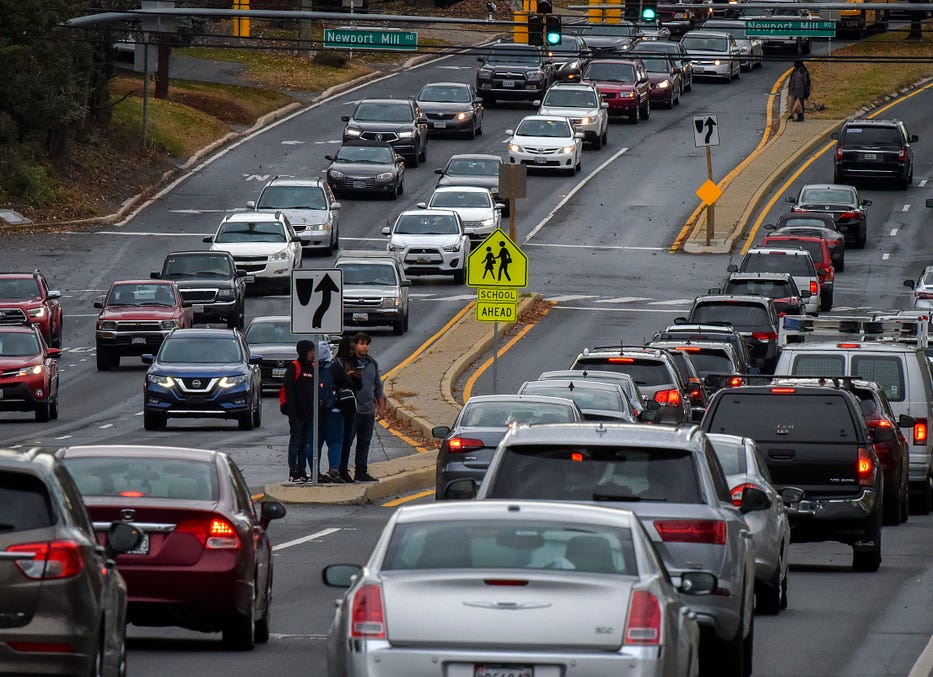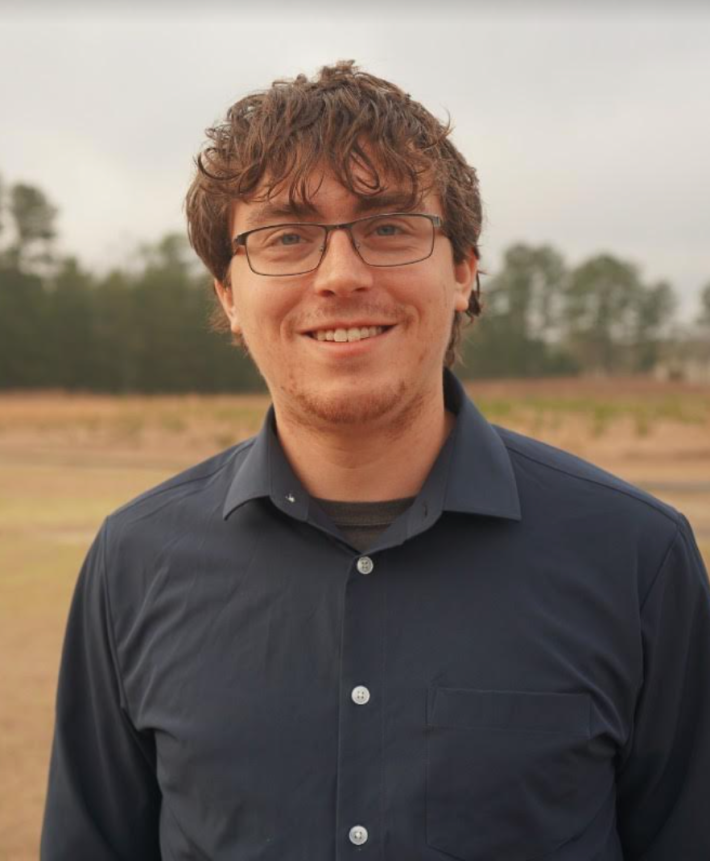Op-Ed: Why Bad City Design is Failing Our Kids (And What to Do About It)
12:01 AM EDT on September 13, 2021

Kids today are lazy.
They tap and swipe at their smartphones all day. They hole up in their rooms, playing Fortnite and Minecraft. They don’t go outside. They don’t build things or play sports at the park, or ride their bikes. It’s not like it used to be.
How many times have you heard something like this?
It’s true that kids today do spend an awful lot of time playing video games and looking at screens — as much as eight hours a day for teens, and only slightly less for younger kids. That’s still far less time than adults spend on their devices, by the way.
Let’s put aside whether or not all this screen time is bad for them for now. Let’s imagine what they could be doing instead. We’re going to start with a visualization.

Take a second and think about where you live right now. Think about your street, your yard, your neighborhood, your city. Now, imagine you were a child.
Where would you play? Is there a park or are there woods within walking distance, or would you have to ask your busy parents to drive you there?
Think some more.
Would any of your friends be around to meet you, or would they also be far away, in their own houses, having to ask all their own parents to drive them too?
Let’s say you want to go get ice cream. You’ve got a little pocket change, an allowance. Can you walk, or ride your bike, to a store to pick up some sweets? Or is your home separated from the corner store by miles of serpentine suburban streets and high-speed roads?
Now you’re back as a parent. Would you feel comfortable letting your kid walk or bike to the store alone? Do you think it would be safe?
Many parents don’t, and wouldn’t.
Kids today aren’t lazy. They aren’t addicted to screens, at least not any more than adults. But the way we’ve built our modern environment restricts, with almost authoritarian precision, the ability of kids to do anything independently — including play outside.
Child development experts have known for decades that kids want to be seen as independent. They want to be little adults. Every parent has stories of how their kid tries to emulate what they’re doing, whether it’s talking on the phone, getting dressed, putting on makeup or typing on the computer.
About 52% of families say they live in suburbs, though this definition is a little hazy. Let’s think of the suburb as a car-focused area, usually on the outskirts of a larger city, with houses separated from offices separated from stores by miles and miles of roads. There are few sidewalks, and few bike trails or lanes. There is no real bus or transit system.

All this adds up to a suburban environment that is agonizingly boring to kids — and an area in which it is impossible for them to act on their need to “try out” independence as they get older.
With wide lanes and miles of tract housing between one’s doorstop and a park or shop or school, it’s an environment designed to be driven and only to be driven.
Kids can’t drive. If they want to go anywhere, it means they’ve got to come to mom and dad and ask them for a ride. Over and over and over again.
Parents move to the suburbs because it’s a “safer” area for their kids — but it’s only safer if the kids stay inside all the time, away from the speeding traffic and dangerous roads that characterize almost all suburban neighborhoods. Traffic deaths — and child fatalities — are far more common in suburbs than in cities.
Looking out their window on this hostile landscape, it’s no wonder many kids choose to be independent on their own terms, in virtual worlds, where they can chat and hang out with their friends with no fuss.
To fix this, we need to change the way we think about kids and about our cities. We need to think of kids as full members of society and we need to design our neighborhoods for kids to have full, rich childhoods that let them grow into well-rounded members of our communities.
So what do we do?
We follow three simple steps: Connect the streets, mix the uses, and shrink the schools.
Connect the Streets
Suburban streets follow a hierarchy that makes travel without a car impossible, and dramatically increases congestion. In cities, grid patterns ensure that traffic is distributed evenly. There are many ways to get everywhere, so there is never all that much traffic on any one road. An obstacle like a disabled car on one street simply causes cars to shift to another street.
In suburban areas, streets run wild in every direction. Many of them dead-end. Instead of a distributed grid, streets all empty out onto “collector” streets that must carry all the traffic from everywhere. It’s a system that is impossible to navigate safely without a car — and is woefully inefficient even with a car.

We have to connect our streets so that kids can travel where they want without having to be driven everywhere. Cul-de-sacs and curving dead-end suburban streets must be woven into a network that allows everyone to walk, bike or drive multiple routes to go multiple places.

Mix the Uses
If we treat kids as members of society, we need to give them access to a part of society beyond endless single-family homes. Most suburban areas use a form of zoning known as Euclidean zoning, which strictly separates offices from housing from retail from restaurants from schools and so on. Modern planning has long accepted this idea as misguided (and racist). We must allow uses to nestle against each other again and create fine-grained cities where kids can participate in society.

This doesn’t mean plopping a Circle K next door. But it does mean bringing things closer together where possible, and encouraging businesses like restaurants, grocers, some service and some retail stores to locate close to where people — and kids — actually live, rather than banishing them a ten minute drive down the road.
Shrink the Schools
In the 1930s, there were more than 127,000 separate school districts in the United States, representative of uncountable small neighborhood schools. By the early 2000s, nearly 90% of them had been consolidated.
The push toward consolidation closed thousands of neighborhood schools. The moves aimed to save school districts money by combining resources, but resulted in a perverse outcome: large, crammed school buildings on the outskirts of the city, far beyond walking distance for any child and reachable only through private car. They are usually surrounded by far more parking space than educational space.

Schools must rely on costly busing services that force kids to wake up before sunrise and take a 30 minute ride (at least) from their house to the new school. When they get older, they’ll start driving, because they have no other option, adding to congestion and pollution. Schools need to be smaller and distributed among neighborhoods, where they can serve their historic functions as centers of neighborhood community.

These three steps are simple to remember, but agonizingly difficult to implement. It will take creative thinkers and public leaders across the nation to begin to see the harm the environment we’ve built is doing to kids, and it will take bravery to implement even small changes.
Change can happen though. It does every day. We can join the effort, and we need to.
Scott Berson (@_ScoBerson_) is a community and regional planner in North Carolina with a master's in community planning and a former reporter for McClatchy newspapers.
This article originally appeared on Medium and is republished with permission from the author.
Kea Wilson is editor of Streetsblog USA. She has more than a dozen years experience as a writer telling emotional, urgent and actionable stories that motivate average Americans to get involved in making their cities better places. She is also a novelist, cyclist, and affordable housing advocate. She previously worked at Strong Towns, and currently lives in St. Louis, MO. Kea can be reached at kea@streetsblog.org or on Twitter @streetsblogkea. Please reach out to her with tips and submissions.
Read More:
Stay in touch
Sign up for our free newsletter
More from Streetsblog USA
Talking Headways Podcast: Details of Development Reform in Minnesota, Part I
Jim Kumon of Electric Housing discusses his work as a developer and urban policy educator in the Twin Cities.
Thursday’s Headlines Don’t Like Riding on the Passenger Side
Can you take me to the store, and then the bank? I've got five dollars you can put in the tank.
Study: When Speed Limits Rise on Interstates, So Do Crash Hot Spots on Nearby Roads
Rising interstate speeds don't just make roads deadlier for people who drive on them — and local decision makers need to be prepared.
Calif. Bill to Require Speed Control in Vehicles Goes Limp
Also passed yesterday were S.B 961, the Complete Streets bill, a bill on Bay Area transit funding, and a prohibition on state funding for Class III bikeways.
Under Threat of Federal Suit (Again!), NYC Promises Action on ‘Unacceptable’ Illegal Police Parking
A deputy mayor made a flat-out promise to eliminate illegal police parking that violates the Americans With Disabilities Act. But when? How? We don't know.





